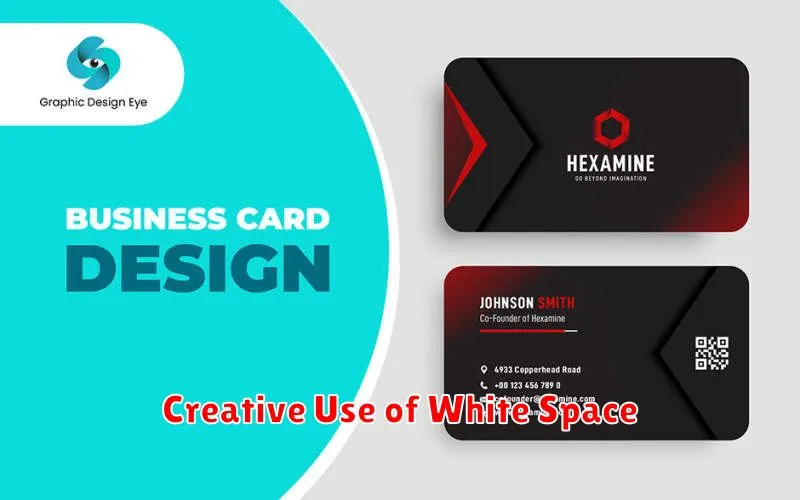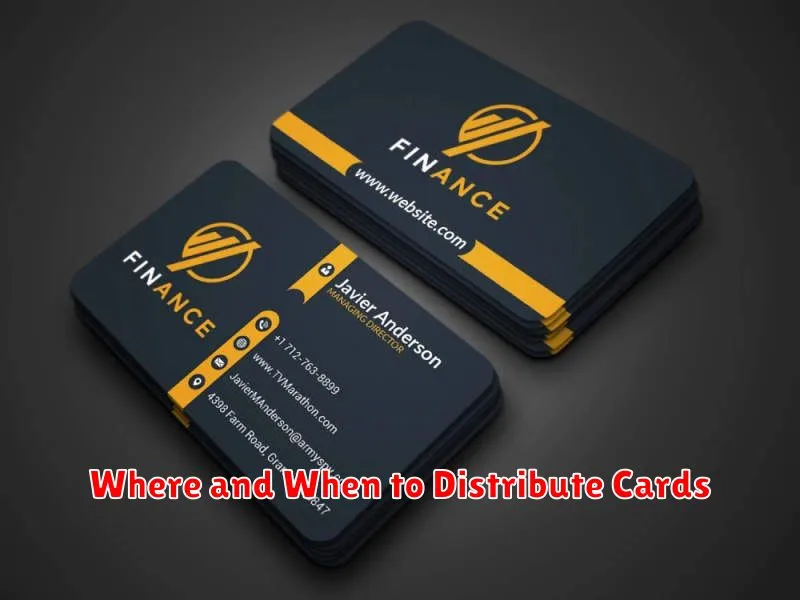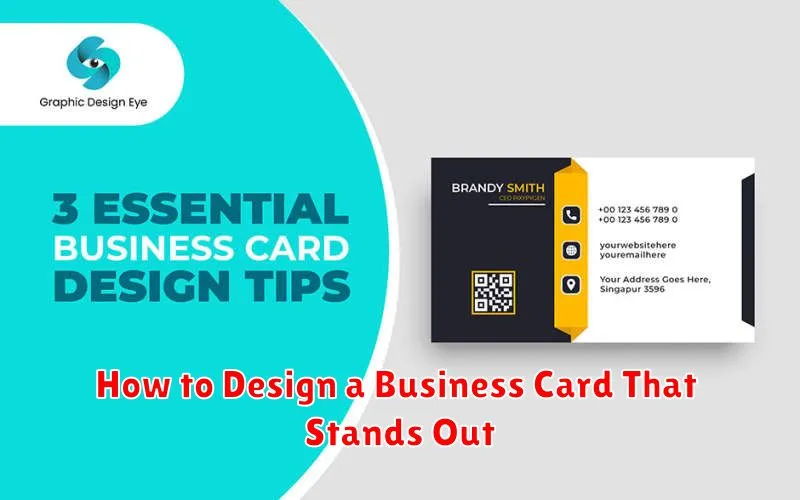In today’s competitive business landscape, a business card is more than just a piece of paper with contact information. It’s a powerful marketing tool, a first impression, and a tangible representation of your brand. A well-designed business card can make you stand out from the crowd, leaving a lasting positive impression on potential clients and partners. This article will guide you through the essential steps of business card design, offering practical tips and advice on how to create a card that truly represents your brand and helps you stand out. Learn how to strategically leverage elements like typography, color, and layout to create a business card that is both visually appealing and effective in communicating your unique value proposition.
Whether you’re an entrepreneur, freelancer, or part of a larger organization, a memorable business card is crucial for networking and building professional relationships. This comprehensive guide will delve into the intricacies of business card design, exploring how to choose the right business card size, select appropriate paper stock, and incorporate essential information effectively. Discover the secrets to creating a business card that not only looks professional but also stands out, making a memorable impact and encouraging further interaction. Learn how to design a business card that becomes a valuable asset in your professional toolkit.
Why Business Cards Still Matter
In today’s digital world, the enduring relevance of business cards might seem questionable. However, these pocket-sized emissaries continue to hold significant value in fostering professional connections.
Business cards offer a tangible and professional first impression. They facilitate a quick and easy exchange of contact information, circumventing the awkwardness of on-the-spot digital entry. This tangible exchange creates a more memorable interaction.
Furthermore, a well-designed business card serves as a portable advertisement for your brand, reinforcing your identity and leaving a lasting reminder with potential clients or collaborators. They are especially crucial in networking events where digital tools may not always be readily accessible or appropriate.
Choosing the Right Layout and Size
A well-designed layout is crucial for a memorable business card. Consider the hierarchy of information. Your name and company should be prominent, followed by your title and contact details. Avoid clutter by using white space effectively to guide the reader’s eye.
Standard business card dimensions are typically 3.5 x 2 inches. While this is a safe bet, consider exploring alternative sizes or shapes like square or slim cards to stand out. However, ensure your chosen size is practical for wallets and cardholders.
What to Include (and What to Avoid)
A well-designed business card conveys professionalism and key information effectively. Essential inclusions are your name, title, company name, phone number, and email address.
Consider adding your website or social media handle if relevant to your business. A simple, memorable logo strengthens brand recognition.
Avoid clutter. Too much information can overwhelm the recipient. Refrain from using overly small fonts or busy backgrounds that make the card difficult to read. Outdated information is a major faux pas. Ensure all details are current.
Designing with Your Brand Colors and Fonts
Consistency is key when designing a business card that reflects your brand. Utilizing your established brand colors and fonts is crucial for immediate recognition.
If you have pre-existing brand guidelines, adhere to them strictly. This ensures your business card aligns seamlessly with your other marketing materials. If not, this is an excellent opportunity to define them.
Choose colors that are legible and visually appealing. Limit your palette to 2-3 primary colors to avoid a cluttered look. Your fonts should also be legible and reflect your brand’s personality. A simple, clean font is often the best choice for important information like your name and title.
Creative Use of White Space

White space, also known as negative space, is the area between design elements. It’s not simply blank space; it’s a powerful design tool.
Used effectively, white space can improve readability and give your business card a sophisticated and uncluttered look. It draws the eye to the important information, preventing your card from appearing overwhelming.
Consider generous margins and spacing between your name, title, contact information, and logo. Don’t be afraid to leave some areas blank. This strategic use of white space creates a sense of balance and elegance, making your card memorable.
Printing Techniques That Add Impact
Elevating your business card beyond the ordinary involves exploring special printing techniques. These can add a tactile and visual dimension that leaves a lasting impression.
Consider incorporating these impactful techniques:
-
Embossing/Debossing: Creates raised or recessed designs for a sophisticated feel.
-
Letterpress: A classic technique that yields a deep impression and textured surface.
-
Foil stamping: Adds a metallic sheen in various colors for a touch of elegance.
-
Spot UV coating: Applies a high-gloss finish to specific areas, highlighting key elements.
Strategically using one or a combination of these techniques can significantly enhance the perceived quality and memorability of your business card.
Digital vs Physical Cards
In today’s interconnected world, the question of digital versus physical business cards is a crucial consideration. Both formats offer unique advantages.
Physical cards provide a tangible, traditional feel, fostering a personal connection. They are easily exchanged at in-person events and leave a lasting impression.
Digital cards, however, offer unmatched convenience and shareability. They can be easily updated, distributed via various platforms, and often incorporate interactive elements like links to your website or social media profiles.
The best choice for your business depends on your industry, target audience, and overall branding strategy. Consider the context in which you’ll be using your cards to make the most effective choice.
Including QR Codes or Social Media
In today’s digital age, incorporating QR codes or social media handles on your business card can significantly enhance its functionality and reach. A QR code can instantly direct someone to your website, portfolio, or a specific landing page, bypassing the need for manual entry. This is particularly useful for complex URLs or if you want to track engagement.
Placement and Size are crucial for QR code effectiveness. Ensure it’s large enough to be easily scanned and positioned prominently. Similarly, including your social media handles allows for further connection and engagement. Prioritize the platforms most relevant to your business and use recognizable icons.
Working with Designers or DIY Tools
Creating a standout business card involves choosing the right creation method. You can collaborate with a professional designer for a bespoke design. Designers bring expertise in typography, layout, and branding, ensuring a polished and effective card.
Alternatively, DIY design tools offer a cost-effective solution. Numerous online platforms and software provide templates and customization options. This approach grants greater control over the design process but requires more time and effort. Consider your budget, design skills, and desired level of customization when making your decision.
Where and When to Distribute Cards

Distributing your business card strategically maximizes its impact. Consider locations frequented by your target audience. Networking events, industry conferences, and trade shows are prime opportunities.
Timing is also crucial. Offer your card after a meaningful conversation, not as an initial greeting. When meeting someone new, engage first, then exchange cards as a way to solidify the connection. Follow-up is essential; a brief email referencing your conversation reinforces the interaction.

